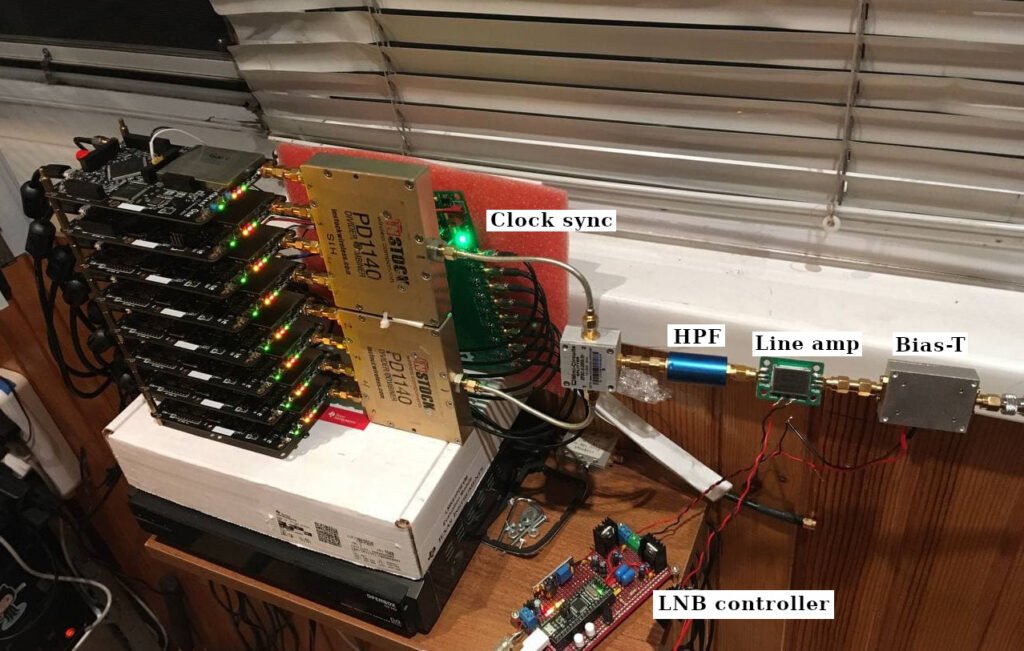Over on Reddit member u/OlegKutkov has recently posted about his success at receiving Starlink beacons at 11.325 GHz with his HackRF "supercluster". Starlink is an Elon Musk / SpaceX venture that aims to provide fast global satellite internet access for low cost. The venture is advanced enough that in most locations the service is now operational, and there will be Starlink satellites in the local sky at any given time.
Oleg's setup to receive the satellite beacons consists of a small hand tracked satellite dish with LNB feed connected to his HackRF "supercluster". The supercluster is 8 HackRFs connected to the same antenna via a splitter, resulting in 160 MHz of bandwidth. Oleg's blog post from last year appears to contain a bit more information about the start of the supercluster. The 11.325 GHz beacon frequency is out of range for the HackRF which covers up to 6 GHz, so a standard satellite TV LNB is used to downconvert the frequency. The LNB had to first be converted to circular polarization, and is fed via an 'invacom' feedhorn.
In the spectrum waterfall image, the doppler shift of the beacons is clearly visible due to the speed at which the satellites orbit.
More information about his setup is available from his followup Reddit comment and the Twitter links he provides there. You can also visit his Twitter directly at @olegkutkov where he shows more images of his HackRF supercluster and the hardware he' using.
In the past we've posted about how IU2EFA and Jan de Jong were able to track the Starlink satellites via an alternative means involving reception of the European GRAVES space radar being reflected off the satellite body.


